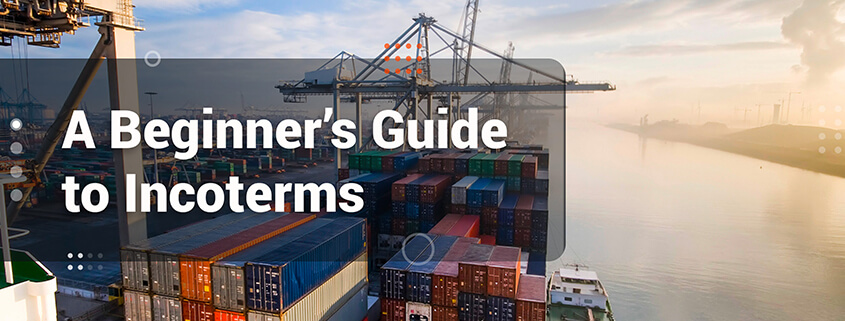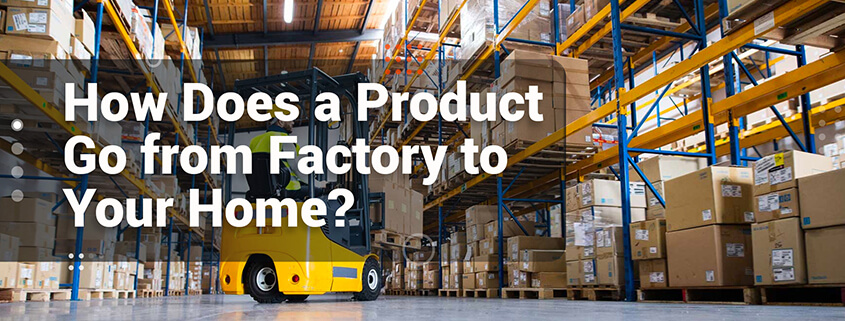When you think of product design, shipping might be the last thing on your mind. However, it’s still a crucial part of the process and can affect your profits if done poorly. One aspect of shipping and logistics is incoterms.
Incoterms might seem confusing, but they’re actually not all that complicated. If you’re shipping a product from one location to another, then it’s crucial you understand what they are and how they work.
When it comes to freight shipping, the history is fascinating. From horses pulling carts to container ships transporting literally—tonnes—of goods, we’ve come a long way. Now, the interconnectedness of our supply chains allows us to buy all kinds of products and goods, like pineapples from Hawaii and saffron from Spain.
Logistics management is an entire field of study in itself, and many people dedicate themselves to understanding all the different stages of transportation. While we don’t expect you to be a supply chain manager, you can still benefit from understanding the overview of Incoterms when designing your products.
Fun fact: The first shipping container was only invented in 1956 by American entrepreneur Malcom McLean.
A key part of international shipping is the incoterms, which can be intimidating to a lot of people. Thankfully, we’re diving deep into the topic in today’s guide on incoterms.
What are Incoterms?
In the world of shipping and logistics, Incoterms is an abbreviation of the words: “International Commercial Terms.” These are the terms agreed to by the buyer and seller, which reduces confusion in the shipping process.
They are written as three-letter abbreviated trade terms and were formally established by the International Chamber of Commerce (ICC). As a result, the logistics of international trade are simplified since they clearly communicate different aspects of cross-border trade.
In general, there are a few things major areas that incoterms address:
- Point of delivery: This defines the point of change of hands from seller to buyer.
- Transportation costs: This defines who pays for whichever transportation is required.
- Export and import formalities: This defines which party arranges for import and export formalities.
- Insurance cost: This defines who takes charge of the insurance cost.
What are the different types of Incoterms?
There are 11 main terms to know when it comes to Incoterms, but we’ll break them down for you. Use these to help the buyers and sellers communicate the provisions of a contract clearly.
Here is a quick table with the different terms and what they entail:
| Code | Acronym | What’s Involved |
| EXW | Ex Works | The seller ensures the goods are at the seller’s premises or another specific location where the buyer loads and clears the goods for export. |
| FCA | Free Carrier | The seller delivers goods either to the carrier, a specific person at the seller’s premises, or another specific location. Any risks passed onto the buyer must be clearly stated. |
| FAS | Free Alongside Ship | The seller delivers goods alongside a vessel chosen by the buyer. The responsibility lies with buyers after goods are alongside the vessel. |
| FOB | Free Onboard Vessel | When the seller delivers goods on-board a vessel chosen by buyers. The responsibility lies with the buyer once goods are on the vessel. |
| CFR | Cost & Freight | Like FOB, except that the seller must pay for the costs and freight to deliver goods to their destination. |
| CIF | Cost, Insurance, & Freight | Similar to CFR, except the seller arranges insurance cover against the buyer’s risk of loss or damage. |
| CPT | Carriage Paid To | The seller must arrange the transportation of the goods to a specific destination, but doesn’t insure them. |
| CIP | Carriage & Insurance Paid To | Like CPT, but the seller is also in charge of insuring the goods. |
| DAP | Delivered At Place | The seller delivers the goods to a specific destination, after the goods have been unloaded. The seller has full control of up until the named place of destination. |
| DPU | Delivered At Place Unloaded | The seller delivers the goods ready for unloading at the specific destination. The seller has full control up to the named place of destination. |
| DDP | Delivered Duty Paid | The seller is in charge of all costs and risks relating to the delivery of goods to the buyer’s named place of destination, including clearing goods for export and import, paying duties and any customs formalities. |
This list is also organized from the most obligation to the seller (ECW) to the least obligation to the seller (DDP). When choosing, you’ll need to carefully weigh the pros and cons of each one.
How do I choose the right Incoterms?
With so many choices, it’s difficult to know what to choose. While there are a lot of factors to help you decide, here are some general tips to help you.
One common practice in the industry is that you should “buy” FOB and “sell” CIF. That is because there are different benefits and costs with each pricing term, especially as they relate to an importer or exporter.
All that aside, FOB (Free on Board) is, generally, the most popular Incoterm since it provides equal benefits and risks to the buyer and seller.
If you have more experience importing goods and want full control over the process, then EXW (Ex Works) may be the way you decide to go. It does, however, mean that you take on the most risk and responsibility, so we would advise against that if you’re still learning the ropes.
When choosing the right incoterms, you want to get it right. Shipments can face all sorts of problems without the correct incoterm so it’s crucial to think carefully to decide which one is appropriate.
For example, logistics costs could increase, affecting your profits later on. Alternatively, the buyer or seller may not be able to comply with the incoterm causing issues when you go to pick up your goods and they never arrive.
Summary
Not every business uses the same incoterm, so you have to choose based on what’s best for you. Hopefully, this guide expanded your knowledge and boosted your confidence when it comes to understanding incoterms.
At the end of the day, we recommend working with professionals who know what they’re doing so your logistics and shipping processes run smoothly. It might not be the first stage of product development, but it’s an important one!
If you found this article helpful, don’t forget to share it and subscribe to our newsletter for more useful content like this.
About the Author:
Ventrify is a product design and manufacturing firm that helps entrepreneurs bring product ideas from concept to market. We take in fledgling ideas and bring them through our iterative design process to create products our clients can be proud of. Then, we work with manufacturing facilities worldwide to bring our clients the highest quality products at competitive prices.
If you have questions about using prototypes in your product development journey or need help, reach out to us through our Website, Facebook, or LinkedIn.
Article by Victoria Fraser



